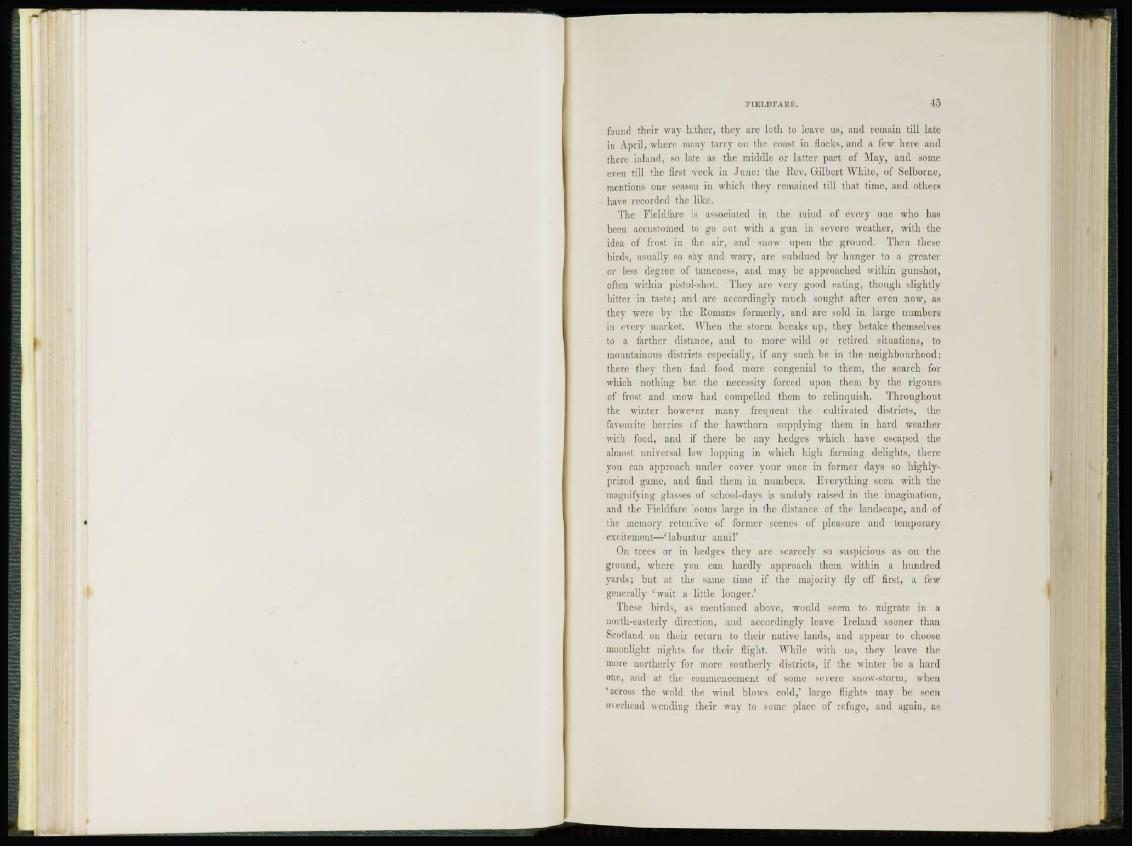
FIELDFARE. 45
found their way hither, they are loth to leave us, and remain till late
in April, where many tarry on the coast in flocks, and a few here and
there inland, so late as the middle or latter part of May, and some
even till the first week in June: the Rev. Gilbert White, of Selbornc,
mentions one season in which they remained till that time, and others
have recorded the like.
The Fieldfare is associated in the mind of every one who has
been accustomed to go out with a gun in severe weather, with the
idea of frost in the air, and snow upon the ground. Then these
birds, usually so shy and wary, are subdued by hunger to a greater
or less degree of tameness, and may be approached within gunshot,
often within pistol-shot. They are very good eating, though slightly
bitter in taste; and are accordingly much sought after even now, as
they were by the Romans formerly, and are sold in large numbers
in every market. When the storm breaks up, they betake themselves
to a farther distance, and to more- wild or retired situations, to
mountainous districts especially, if any such be in the neighbourhood:
there they then find food more congenial to them, the search for
which nothing but the necessity forced upon them by the rigours
of frost and snow had compelled them to relinquish. Throughout
the winter however many frequent the cultivated districts, the
favourite berries of the hawthorn supplying them in hard weather
with food, and if there be any hedges which have escaped the
almost universal low lopping in which high farming delights, there
you can approach under cover your once in former days so highlyprized
game, and find them in numbers. Everything seen with the
magnifying glasses of school-days is unduly raised in the imagination,
and the Fieldfare looms large in the distance of the landscape, and of
the memory retentive of former scenes of pleasure and temporary
excitement—'labuntur amii!'
On trees or in hedges they arc scarcely so suspicious as on the
ground, where you can hardly approach them within a hundred
yards; but at the same time if the majority fly off first, a few
generally 'wait a little longer.'
These birds, as mentioned above, would seem to migrate in a
north-easterly direction, and accordingly leave Ireland sooner than
Scotland on their return to their native lands, and appear to choose
moonlight nights for their flight. While with us, they leave the
more northerly for more southerly districts, if the winter be a hard
one, and at the commencement of some severe snow-storm, when
'across the wold the wind blows cold,' large flights may be seen
overhead wending their way to some place of refuge, and again, as